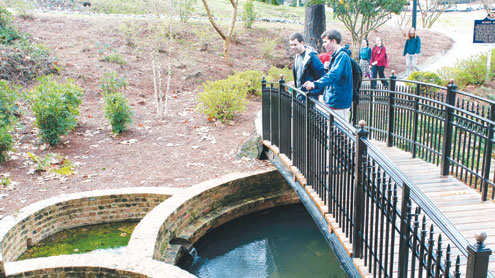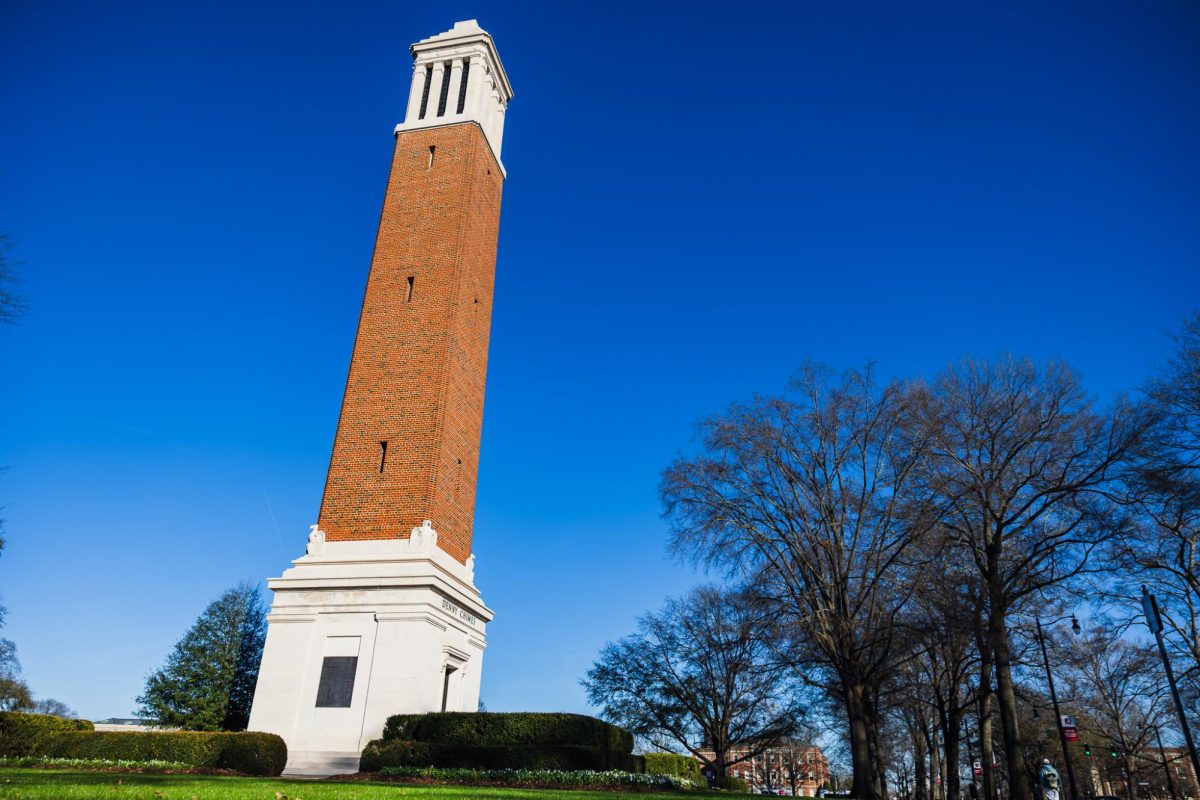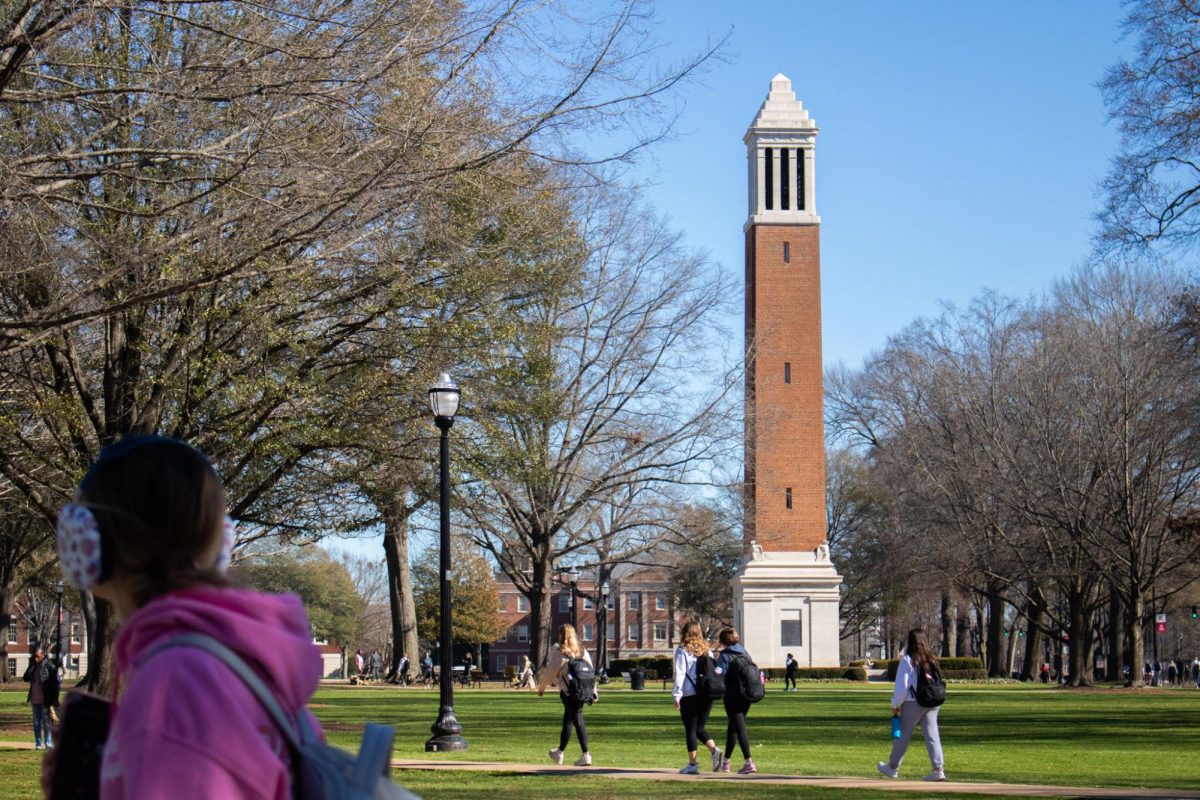 It may be tucked away at the base of a hill behind the Ferguson Center, keeping ten Hoor Hall company along the outer fringe of campus, but Marr’s Spring was central to the original planning and construction of the University of Alabama.
It may be tucked away at the base of a hill behind the Ferguson Center, keeping ten Hoor Hall company along the outer fringe of campus, but Marr’s Spring was central to the original planning and construction of the University of Alabama.
According to James B. Sellers in “History of the University of Alabama, Vol. 1,” the original Board of Trustees voted in December of 1827 to decide which Alabama city was best suited to be the home of the new University. After 19 ballots, “Tuskaloosa” beat runner-up Montevallo, 47 votes to 18. The Marr’s Spring property played a major role in the decision.
The founders decided to build the University on Marr’s Spring and Marr’s Field primarily because of the convenient water source the spring provided. The land, named after William M. Marr, a wealthy plantation owner who leased the property until the University chose to use it in 1827, had been made available to the University through a government grant in 1819.
Marr’s Spring served as the campus’ primary water supply until around 1920, when the University completed its transition to utilizing the city’s water system, according to a 1973 letter from James C. Wilder, then director of University Relations, to the Alabama Historical Association.
In “The University of Alabama: A Guide to the Campus,” current art history professor Robert Mellown wrote, “Water from this flowing well was collected in brick cisterns from which University slaves hauled buckets to the rooms of students.” The remains of two of these receptacles survive today.
In 1936, the spring area was converted to “the swimming lake,” a recreational pond which remained on campus for decades.
“When I went to school here in the early 1980s, the swimming lake was still there,” University Archivist Tom Land said. “There was still a little dock and you could see where they used to swim. But we never swam in it. The water was too cold, and everyone had pools.”
Land also described a “little goat path made by students” cutting across the spring to get to class.
The swimming area has since been drained and additional landscaping and a formal pathway have been added, due in large part to a 1972 restoration effort by the Chi Omega sorority.
“I come through this area as a shortcut all the time,” said Kendra Hollis, a senior majoring in marketing.
Hollis doesn’t limit herself to quick trips only, however. She said she comes and spends time near the spring every Monday afternoon for downtime between class and work.
“I get out of class around 1 [p.m.] and go get some Subway,” she said. “Then I come over here for a while because it’s a nice place to relax. It seems like not many people come here or know about it.”
Tanner Harris, a sophomore majoring in business, shares Hollis’ positive regard for the watery enclave. While doing homework on a bench in his inaugural visit to the Spring, he was already planning a return trip.
“I just decided to stop by and check it out today on a whim, but I’ll definitely be coming here more often,” he said. “It’s so nice and peaceful.”









